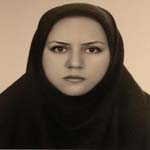Morphic Structure of Constitutional Poetry Based on the Poetry of Farrokhi Yazdi, Aref Ghazvini, and Mirzad Eshghi
The constitutional movement revolutionized the literature of the Qajar period by dramatically changing the entire structure of society. Factors such as connecting with the Western world, travelogues, establishing new schools, translating Western works, the press and more. It provided the Iranian modernization grounds, and this modernization influenced the works of the constitutional period in terms of linguistic, literary, and content, resulting in the most important stylistic changes. In this research, descriptive-analytical and library methods have been attempted; articles on social and literary situation, constitutional poetry and poets (Farrokhi, Aref and Mirzadeh Eshghi) have been presented and more on style, grammatical and structural features Just consider these poets. The mere section deals with vocabulary analysis. Research in the grammatical structure of constitutional poetry is important because on the one hand constitutional poetry has provided the context for structural and content change. And then, influenced by translation, they became acquainted with and influenced each other's European prose and poetry. Citing evidence and examples from the works of these poets, we conclude that populism has a high frequency in constitutional poetry, and although poets have a claim to modernity and modernity in literature, especially poetry; They are not well versed in grammar rules, so syntax and linguistic errors are abundantly evident in their poems.
-
The internal transformation of two romantic concepts (naturalism and personal feelings) within the scope of politics in the works of Forough Farokhzad and Simin Behbahani
Farzad Rostami*, Mahboobeh Khorasani
Journal of Literary Research, -
Investigating the role of animals in the common proverbs of Rostam city
Gholamali Mohammadi, Atamohammad Radmanesh *,
Journal of Iranian Regional Languages and Literature,


